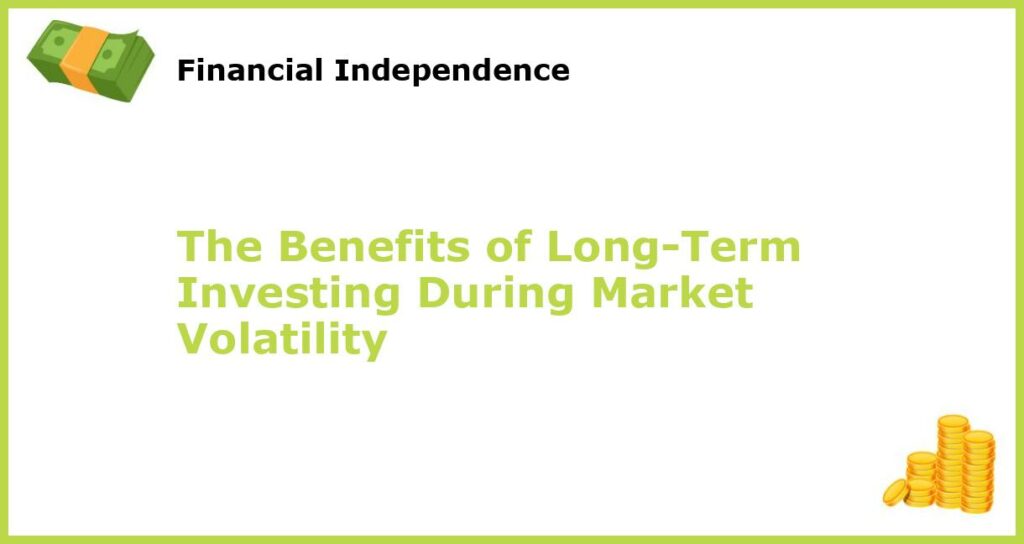Investing in the stock market can be intimidating, especially during periods of market volatility. Investors tend to get anxious and averse to risks in such times. However, market ups and downs are all part of the natural cycle, and by learning to understand and manage them, investors can avoid making rash decisions based on emotions. One of the best methods to deal with these risks is long-term investing. By adopting a long-term investing approach, investors can potentially reap several benefits. Here are ten ways investing for the long term can help investors.
1. Volatility is Normal

Market volatility is a regular feature of investing. In the short term, markets tend to fluctuate unpredictably. Fortunately, volatility tends to even out in the long run, through which investors could generate higher returns. Therefore, instead of fearing market volatility, investors must prepare for it and ride out short-term losses. Long-term investing can help investors weather the storms of market uncertainties and still enable them to generate attractive returns.
2. Opportunity to Buy Low

Market downturns present opportunities for investors to buy quality companies at a lower price. Through long-term investing, investors can take advantage of periods of decline and potentially reap higher returns once the market recovers. One prime example of such an opportunity is the market crash in March 2020, amid the COVID-19 pandemic. Investors who took the plunge and bought during that time saw attractive returns as the market picked up.
3. Compounding Returns

Long-term investing allows investors to benefit from the power of compounding returns. By reinvesting dividends and allowing investments to grow over an extended period, investors can potentially earn higher returns than through short-term investing. Compounding is a powerful wealth-creation tool that significantly multiplies returns and enables investors to generate more significant long-term gains.
4. Less Time and Effort

Investing requires time, knowledge, and effort to manage. It can be stressful to constantly buy and sell based on short-term market fluctuations. By choosing quality companies and holding onto them for the long term, investors can save time and avoid the stress of constantly buying and selling. Long-term investing is a passive strategy that requires less monitoring and attention as compared to active trading.
5. Reduce Transaction Costs
Short-term investing often involves frequent buying and selling, which can lead to high transaction costs. Transaction costs refer to the fees charged by brokers for managing trades. By investing for the long term, investors can minimize transaction costs and potentially improve their overall returns since long-term investing involves fewer trades.
6. Diversification
Diversification is an essential strategy in investing. Investing in a single stock can lead to significant losses for investors. However, by holding onto investments for the long term, investors can avoid the risks of short-term fluctuations and benefit from the long-term growth of different sectors and markets. Long-term investing provides an opportunity to diversify across various companies, sectors, and asset classes.
7. Emotional Management
Investing can be emotional, especially during market downturns. The fear and panic resulting from watching stock prices decline can cause investors to make hasty decisions that negatively impact their investments. Long-term investing can help investors avoid making emotional decisions based on short-term market fluctuations. By taking a long-term approach and focusing on their goals, investors can avoid making irrational decisions and potentially earn higher returns over time.
8. Reduce Market Timing Risk
Trying to time the market can be risky, and many investors tend to miss opportunities. By investing for the long term and avoiding short-term market timing decisions, investors can reduce their exposure to risk and potentially earn higher returns over time. Long-term investing enables investors to focus on the quality and potential of their investments rather than short-term price movements.
9. Stay Ahead of Inflation
Inflation can erode the value of investments over time, making it essential to have an investment strategy that outpaces inflation. Long-term investing can help investors stay ahead of inflation by earning higher returns than the rate of inflation over the long term. This strategy can help protect the purchasing power of investors’ portfolios and potentially increase their wealth over time.
10. Invest in Future Growth
Long-term investing enables investors to participate in the growth of companies and markets. By investing in quality companies with strong growth prospects that have an extended horizon, investors can potentially benefit from their future growth and earn higher returns over the long run. Some investors reap significant rewards by investing in high-growth sectors such as e-commerce, technology, and healthcare from a long-term perspective.







